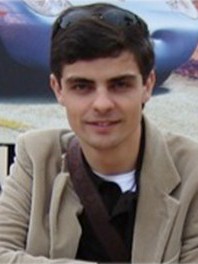resumo
This work aims to test the adsorption process for the removal of the fish anaesthetic MS-222 from water using biochars obtained from agricultural biowastes (Eucalyptus bark, peanut shells, walnut shells, peach stones, grape seeds and olive waste) as adsorbents. An industrial residue (primary paper mill sludge) and a commercial activated carbon were tested for comparison purposes. The starting materials and the resulting biochars were characterized by elemental and proximate analyses, total organic carbon, FTIR, C-13 and H-1 solid state NMR, and SEM. Also, specific surface area and porosity of biochars were determined. Then, batch kinetic and equilibrium experiments were performed on the adsorption of MS-222 onto the different produced biochars. The fastest kinetic was obtained using primary sludge pyrolysed (30 min to equilibrium attainment) and the highest biochars adsorption capacity was obtained using peanut shells (34 mg g(-1) of maximum adsorption capacity, predicted by the Langmuir-Freundlich model). Commercial activated carbon reaches 349 mg g(-1) of maximum adsorption capacity, as predicted by Langmuir model. (C) 2015 Elsevier B.V. All rights reserved.
palavras-chave
ACTIVATED CARBON; VACUUM PYROLYSIS; AQUEOUS-SOLUTION; ADSORPTION; BIOCHAR; AQUACULTURE; SORPTION; BIOMASS; SLUDGE; CHARS
categoria
Chemistry; Spectroscopy
autores
Ferreira, CIA; Calisto, V; Santos, SM; Cuerda-Correa, EM; Otero, M; Nadais, H; Esteves, VI
nossos autores
agradecimentos
This work was supported by European Funds through COMPETE and by National Funds through the Portuguese Science Foundation (FCT) within project PEst-C/MAR/LA0017/2013. Catarina I. A. Ferreira thanks Fundacao para a Ciencia e Tecnologia (FCT) for the PhD Grant (SFRH/BD/88965/2012). Vania Calisto (SFRH/BPD/78645/2011) and Sergio M. Santos (SFRH/BPD/64752/2009) acknowledge for their postdoctoral grants. Also, Marta Otero acknowledges financial support from the Spanish Ministry of Economy and Competitiveness, State Secretariat for Research, Development and Innovation (RYC-2010-05634).


